Product
How to Integrate Stripe to Google Sheets
Effortlessly export Stripe data to Google Sheets and save time with automated data sync and easy setup.
Here's a quick step-by-step guide 🔝
Here's a quick step-by-step guide 🔝
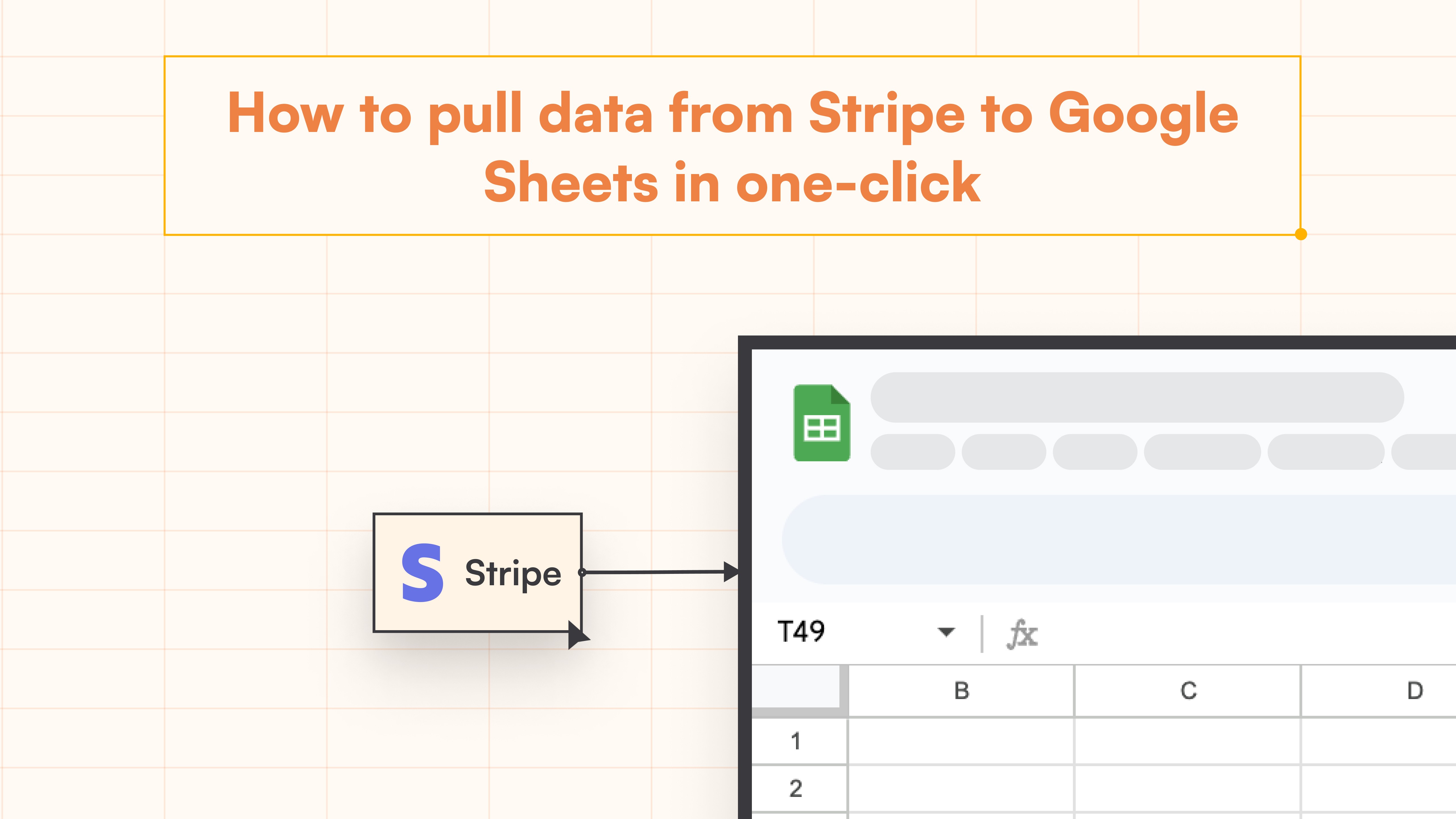


Stripe is a widely used and reliable payment processing platform catering to businesses of all sizes, from freelancers to large retail companies. Stripe also stores essential product, payment, customer, and business analytics data, enabling tasks like authorization, reporting, and tracking within a single platform.
However, Stripe has reporting limitations, prompting many users to export Stripe data to spreadsheet platforms like Google Sheets.
Exporting Stripe data manually can be cumbersome, requiring extensive copying and pasting. However, you can export Stripe data effortlessly to Google Sheets saving you valuable time.
This blog will compare different methods to connect Stripe and Google Sheets, highlighting why Superjoin is often the best choice for many users.
Top 3 Methods to Connect Stripe to Google Sheets
Method 1: Using Superjoin
Superjoin provides the fastest and easiest way to connect Stripe to Google Sheets without any technical know-how or complex setup processes. Here’s how it works:
Step 1: Click Extensions from the Google Sheets menu. Select Add-ons and choose to Get Add-ons. This will bring you to the Google Workspace Marketplace.
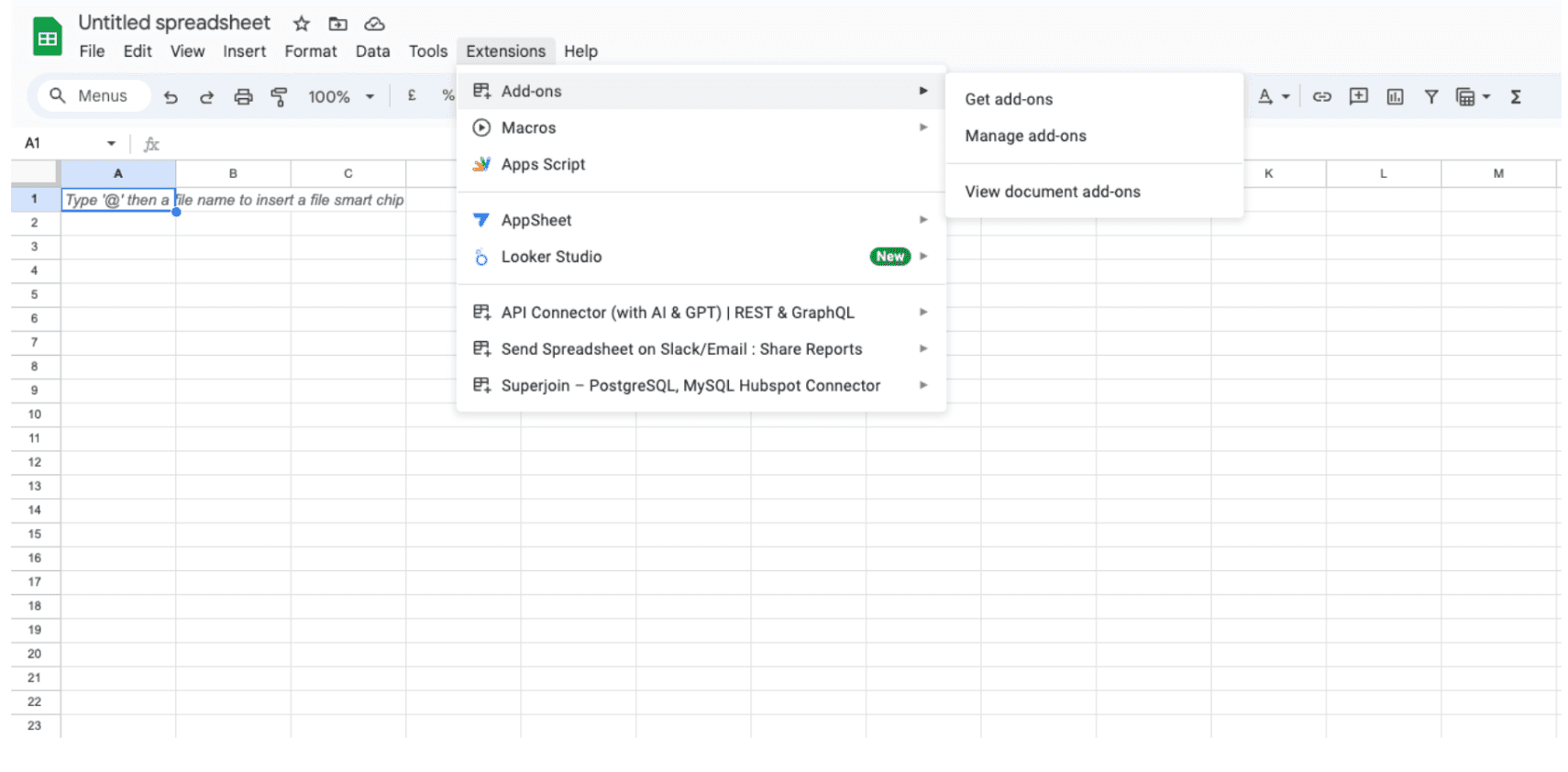
Step 2: Look for Superjoin in the Google Marketplace pop-up window and install the app by following the prompts.

Step 3: Navigate back to the Extensions menu tab and launch Superjoin from there. You should see Superjoin running as a Google Sheets side panel on the right side of your screen.
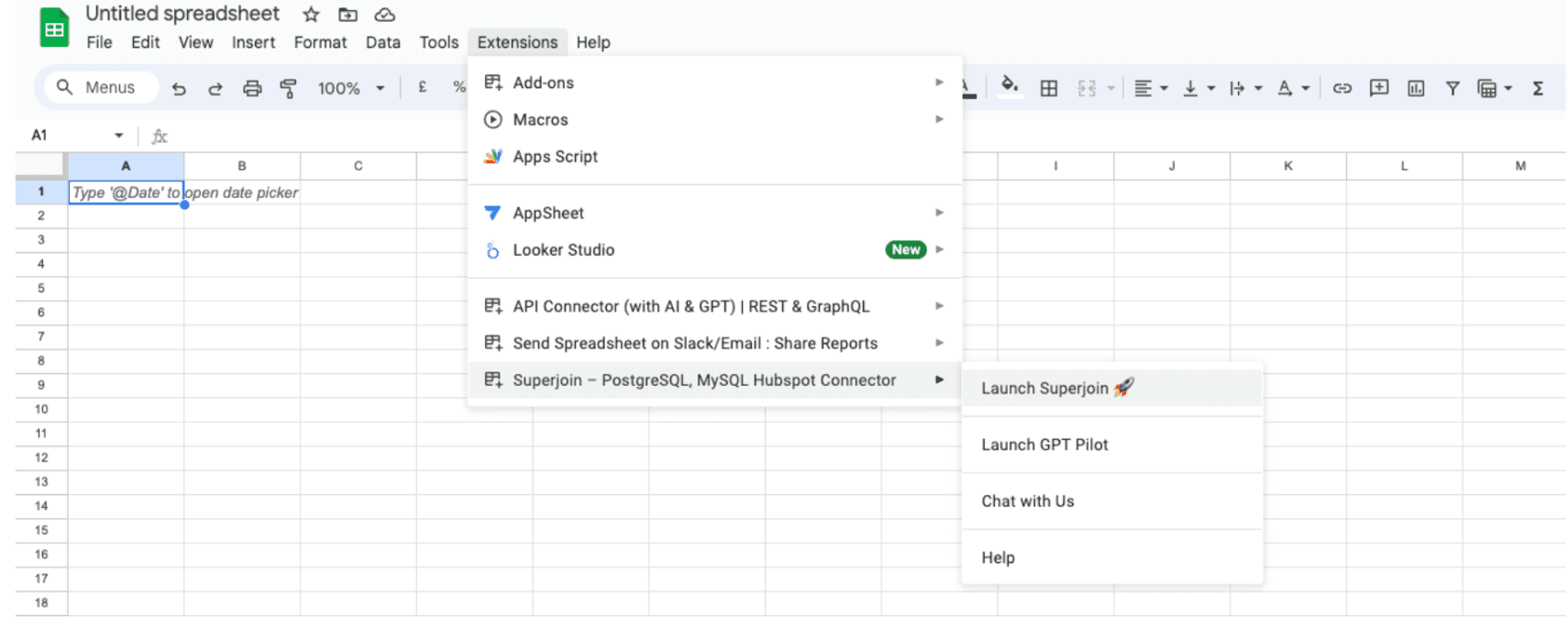
Step 4: From Sources, select Stripe from the list.
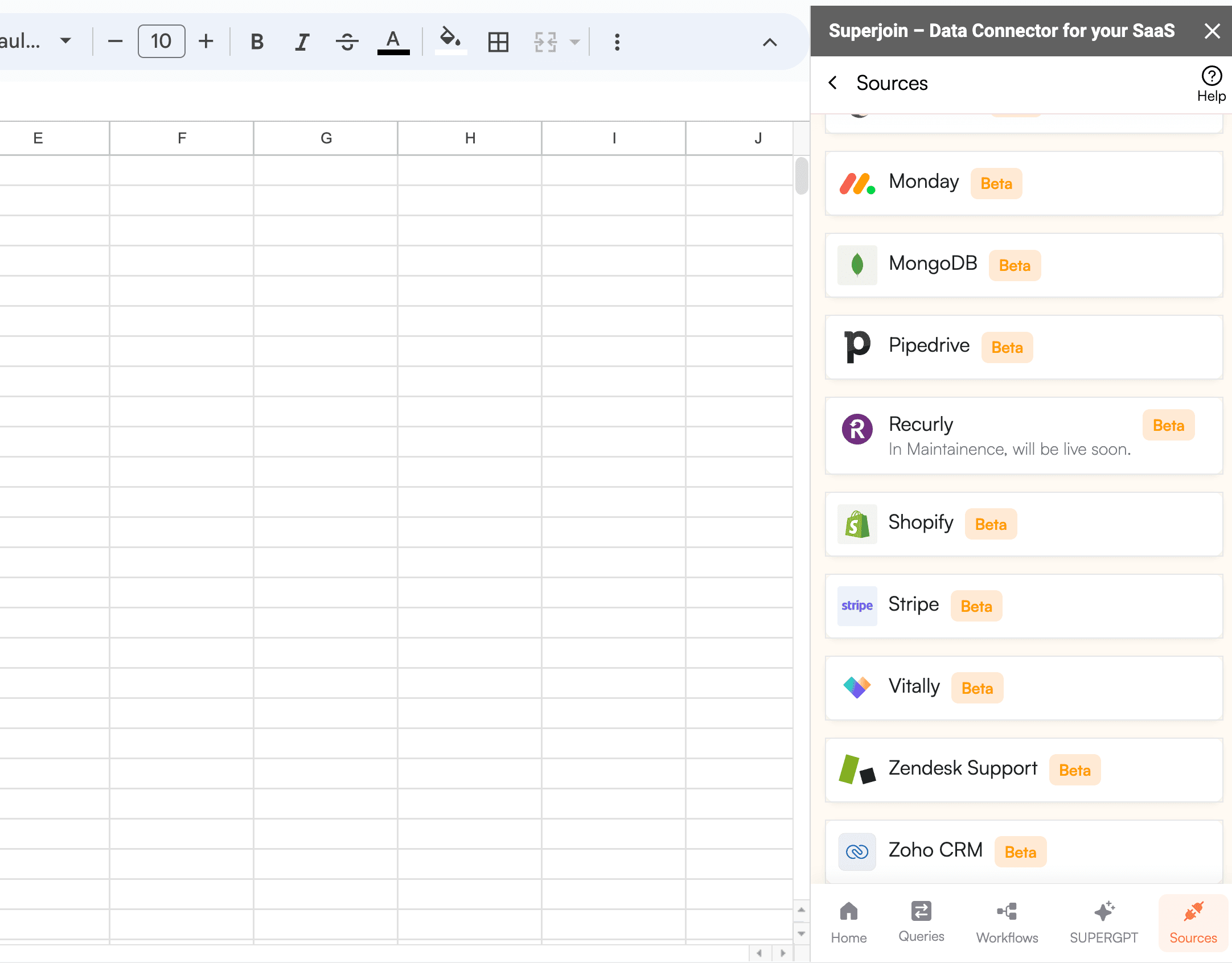
Step 5: After selecting Stripe, authorize Superjoin to access your account by entering your Account ID and Secret Key (API Key).

Step 6: After authorization, you'll see a list of your Stripe properties in the Data Preview Window.
Choose your property and view, then click "Import" to bring the data into Google Sheets.
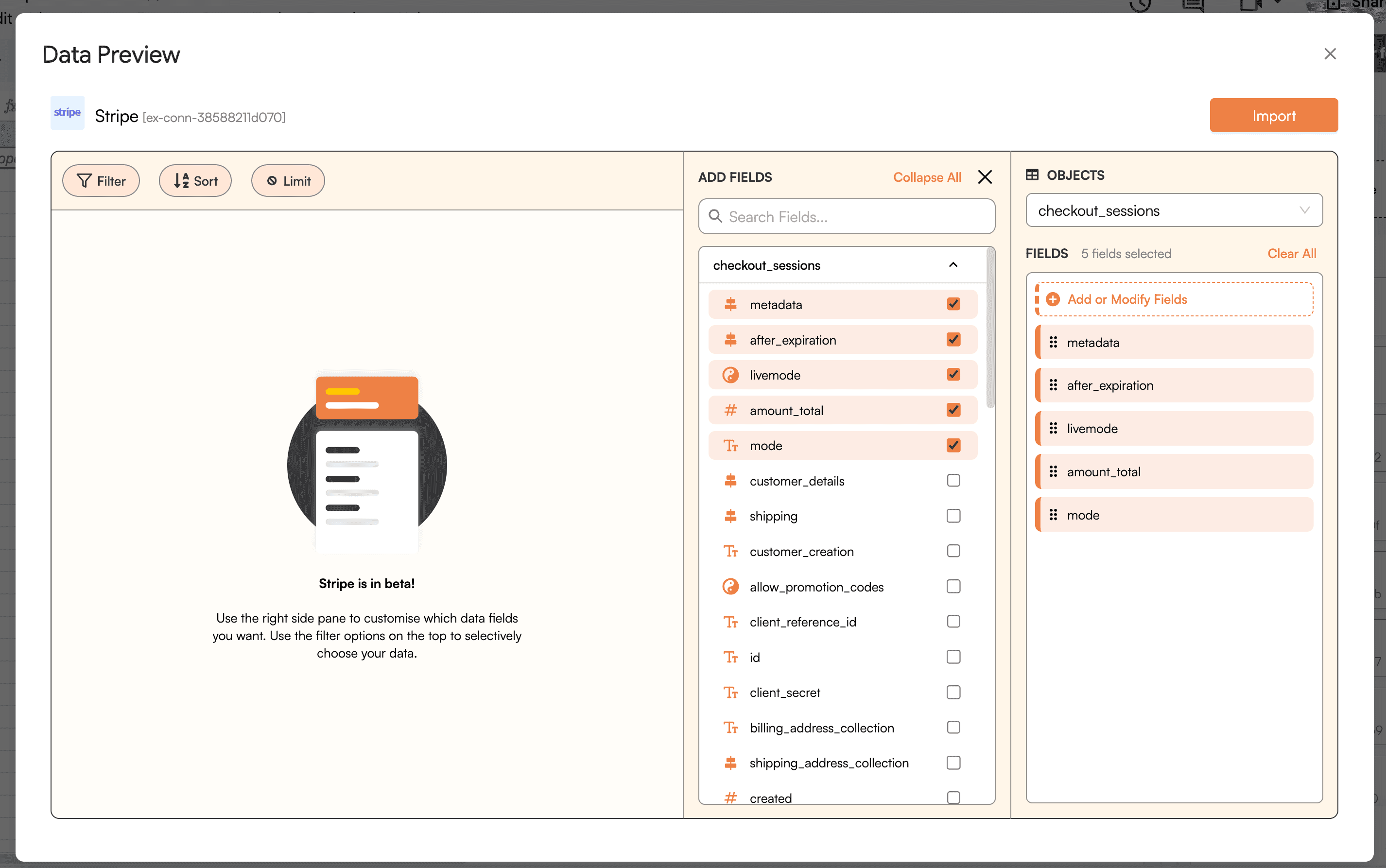
Step 7: Superjoin lets you refresh your imported data instantly with one click or set it to auto-refresh on a pre-set schedule. This way, you won't need to manually update your Stripe data in Google Sheets to reflect changes from the source.

Voila, you've successfully imported your Stripe data to Google Sheets using Superjoin!
It is particularly suitable for users looking for a Stripe to Google Sheets free tool, as Superjoin offers a free tier.
Method 2: Using Stripe's Built-In Export Feature
You can also export Stripe data as a CSV file using Stripe's built-in export feature.
Log in to Stripe: Access your Stripe dashboard and navigate to the data you want to export, such as the Customers page.
Export Data: Click the Export button on the toolbar.

Download CSV: Click Export to download the CSV file to your computer.
Upload to Google Sheets: Open Google Sheets, click the file picker button, and upload the CSV file. Alternatively, you can drag and drop the CSV file into Google Sheets.
Format Data: Since CSV files use raw text, you’ll need to format headers, row colors, and other elements manually.
CSV files are suitable for one-off exports but can be challenging for ongoing data synchronization.
Method 3: Using Data Exporter for Drive
The Data Exporter for Drive app is another method to export Stripe data.
Install the App: Log in to Stripe and access the Stripe App Marketplace. Search for "Data Exporter for Google Drive" and install the app.
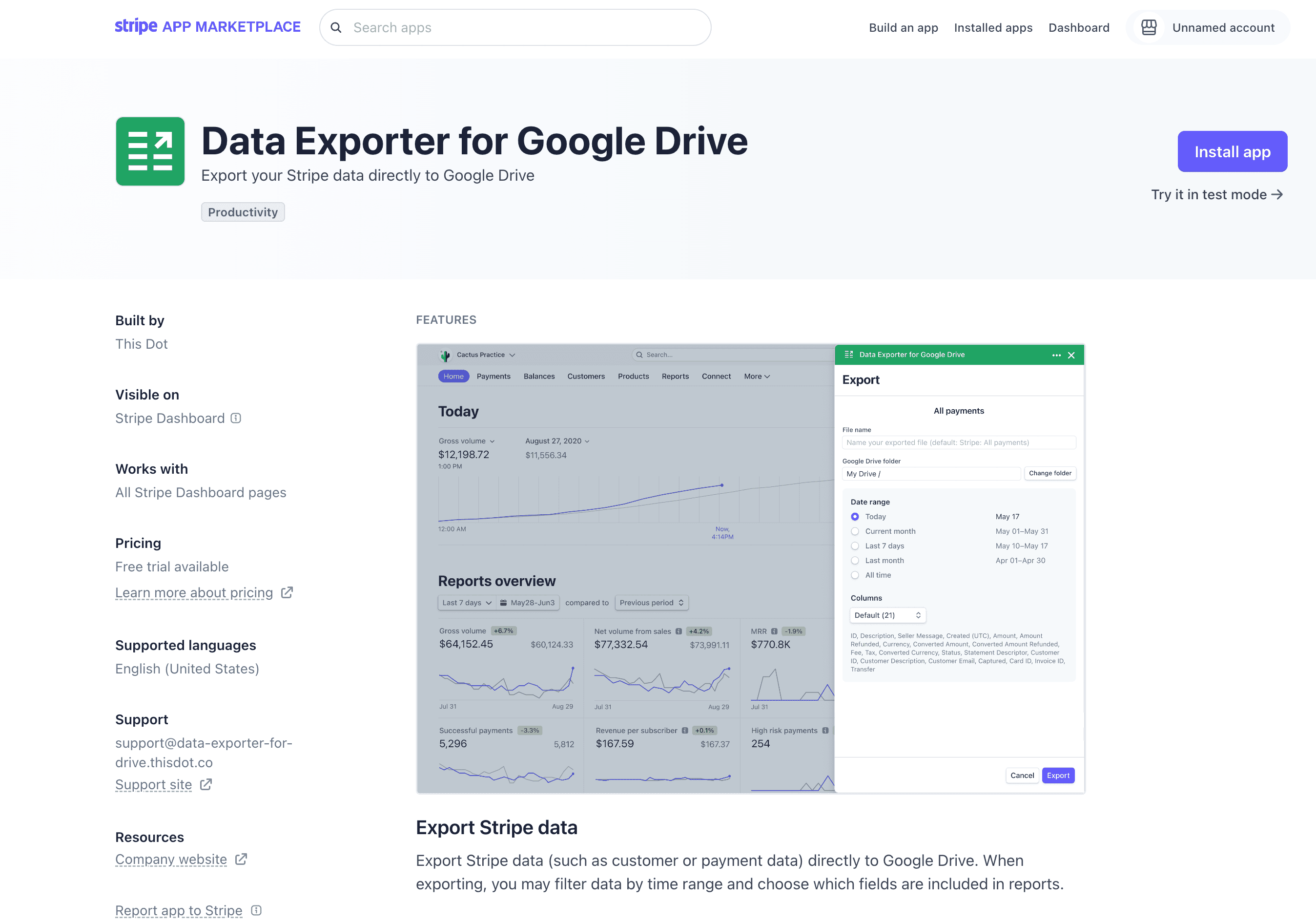
Authorize the App: Follow the prompts to authorize the app with your Google account.
Select Data: Use the Data Exporter interface to choose the dataset you want to export, such as payments, transactions, or customer accounts.
Configure Export: Specify a filename and the Drive location for your Google Sheet. Configure additional export settings as needed.
Export Data: Click Export to send your Stripe data to Google Sheets.
Compared to Data Exporter for Drive, Superjoin.ai offers more flexibility, automatic data updates, and faster data exports.
Why Choose Superjoin?
In comparison to other methods, Superjoin stands out for several reasons:
User-Friendly Interface: Designed for non-technical teams, making it accessible for marketing, sales, and business analysts.
Time Efficiency: Quick data import without the need for manually uploading data.
Automated Updates: Ensures data is always up-to-date with automatic refresh capabilities.
Integrated Experience: Operates within Google Sheets, providing a seamless workflow.
For users looking for a simple, efficient, and integrated solution to connect Stripe with Google Sheets, Superjoin is a superior choice. It minimizes the need for technical expertise and automates the data import process, allowing you to focus on deriving insights rather than managing data imports.
Stripe is a widely used and reliable payment processing platform catering to businesses of all sizes, from freelancers to large retail companies. Stripe also stores essential product, payment, customer, and business analytics data, enabling tasks like authorization, reporting, and tracking within a single platform.
However, Stripe has reporting limitations, prompting many users to export Stripe data to spreadsheet platforms like Google Sheets.
Exporting Stripe data manually can be cumbersome, requiring extensive copying and pasting. However, you can export Stripe data effortlessly to Google Sheets saving you valuable time.
This blog will compare different methods to connect Stripe and Google Sheets, highlighting why Superjoin is often the best choice for many users.
Top 3 Methods to Connect Stripe to Google Sheets
Method 1: Using Superjoin
Superjoin provides the fastest and easiest way to connect Stripe to Google Sheets without any technical know-how or complex setup processes. Here’s how it works:
Step 1: Click Extensions from the Google Sheets menu. Select Add-ons and choose to Get Add-ons. This will bring you to the Google Workspace Marketplace.

Step 2: Look for Superjoin in the Google Marketplace pop-up window and install the app by following the prompts.

Step 3: Navigate back to the Extensions menu tab and launch Superjoin from there. You should see Superjoin running as a Google Sheets side panel on the right side of your screen.

Step 4: From Sources, select Stripe from the list.

Step 5: After selecting Stripe, authorize Superjoin to access your account by entering your Account ID and Secret Key (API Key).

Step 6: After authorization, you'll see a list of your Stripe properties in the Data Preview Window.
Choose your property and view, then click "Import" to bring the data into Google Sheets.

Step 7: Superjoin lets you refresh your imported data instantly with one click or set it to auto-refresh on a pre-set schedule. This way, you won't need to manually update your Stripe data in Google Sheets to reflect changes from the source.

Voila, you've successfully imported your Stripe data to Google Sheets using Superjoin!
It is particularly suitable for users looking for a Stripe to Google Sheets free tool, as Superjoin offers a free tier.
Method 2: Using Stripe's Built-In Export Feature
You can also export Stripe data as a CSV file using Stripe's built-in export feature.
Log in to Stripe: Access your Stripe dashboard and navigate to the data you want to export, such as the Customers page.
Export Data: Click the Export button on the toolbar.

Download CSV: Click Export to download the CSV file to your computer.
Upload to Google Sheets: Open Google Sheets, click the file picker button, and upload the CSV file. Alternatively, you can drag and drop the CSV file into Google Sheets.
Format Data: Since CSV files use raw text, you’ll need to format headers, row colors, and other elements manually.
CSV files are suitable for one-off exports but can be challenging for ongoing data synchronization.
Method 3: Using Data Exporter for Drive
The Data Exporter for Drive app is another method to export Stripe data.
Install the App: Log in to Stripe and access the Stripe App Marketplace. Search for "Data Exporter for Google Drive" and install the app.

Authorize the App: Follow the prompts to authorize the app with your Google account.
Select Data: Use the Data Exporter interface to choose the dataset you want to export, such as payments, transactions, or customer accounts.
Configure Export: Specify a filename and the Drive location for your Google Sheet. Configure additional export settings as needed.
Export Data: Click Export to send your Stripe data to Google Sheets.
Compared to Data Exporter for Drive, Superjoin.ai offers more flexibility, automatic data updates, and faster data exports.
Why Choose Superjoin?
In comparison to other methods, Superjoin stands out for several reasons:
User-Friendly Interface: Designed for non-technical teams, making it accessible for marketing, sales, and business analysts.
Time Efficiency: Quick data import without the need for manually uploading data.
Automated Updates: Ensures data is always up-to-date with automatic refresh capabilities.
Integrated Experience: Operates within Google Sheets, providing a seamless workflow.
For users looking for a simple, efficient, and integrated solution to connect Stripe with Google Sheets, Superjoin is a superior choice. It minimizes the need for technical expertise and automates the data import process, allowing you to focus on deriving insights rather than managing data imports.
FAQs
Can I schedule automatic data updates with Superjoin ?
Can I schedule automatic data updates with Superjoin ?
What data can I export from Stripe using Superjoin ?
What data can I export from Stripe using Superjoin ?
Is my Stripe account secure with Superjoin?
Is my Stripe account secure with Superjoin?
Automatic Data Pulls
Visual Data Preview
Set Alerts
other related blogs
Try it now

